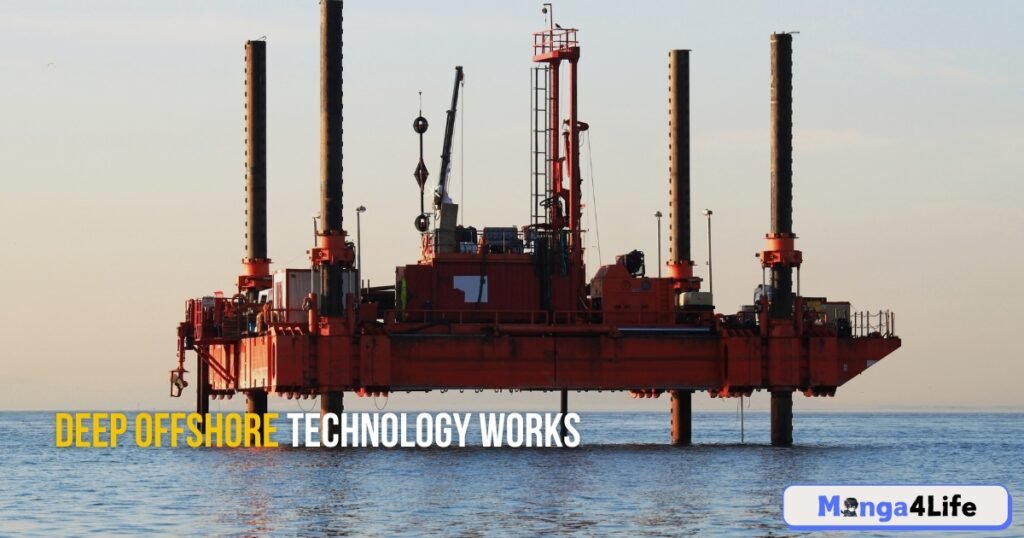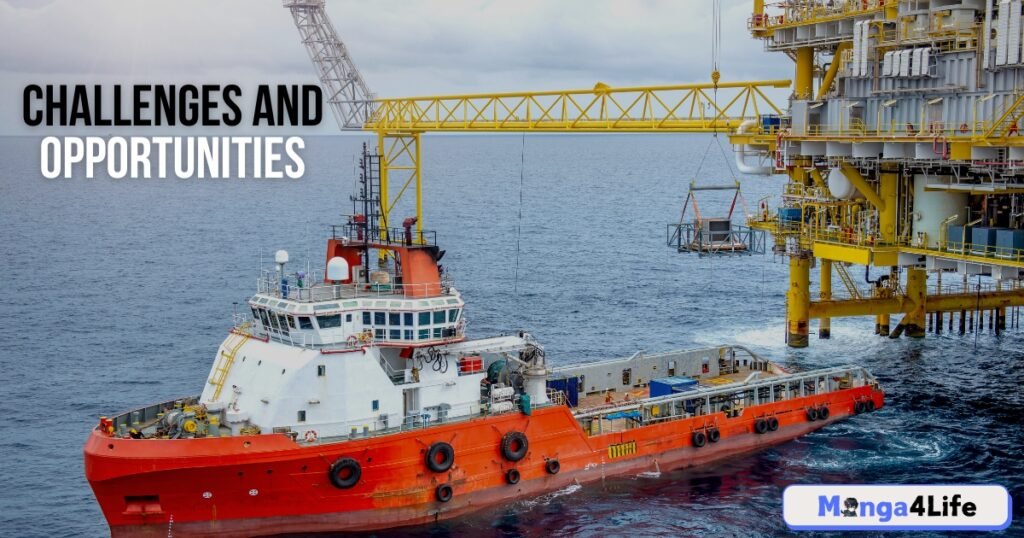What Is Deep Offshore Technology and Its Benefits

Deep offshore technology focuses on extracting resources from the ocean like oil, gas, and energy. These advanced technologies help industries access resources in remote and challenging locations like the Arctic. They are necessary for reaching energy sources that are not available on land.
Offshore operations are vital for global energy supply and economic growth. This article explains how deep offshore technology works and its main benefits. It aims to show how these technologies support energy needs worldwide.
What Is Deep Offshore Technology?
Deep offshore technology involves specialized engineering to work in oceans deeper than 500 meters. It enables accessing valuable resources like oil, natural gas, and minerals from deep-sea areas.
This technology includes developing strong equipment to handle unique deep-water challenges. Industries like energy, mining, and renewable energy heavily rely on deep offshore technology.
Also Read more about:- Big Booty Tech Nerd: Redefining Style and Smarts in Tech
Historical Development
The development of deep offshore technology has advanced significantly over the years. Early offshore drilling started in shallow waters near coastal areas. By the 20th century, advancements allowed operations in deeper waters using new techniques.
Major milestones include the invention of strong underwater structures and floating platforms. The 21st century introduced robotics, advanced sensors, and real-time monitoring systems to improve operations.
Current Advancements
Today, automation and artificial intelligence are driving many improvements in deep offshore operations. More substantial materials are developed to endure high-pressure and corrosive deep-sea environments.
Renewable energy projects like offshore wind farms also use this technology. These advancements improve safety, efficiency, and sustainability in deep offshore operations worldwide.
Also Read:- How to Become a Surgical Tech in Zaz | A Complete Guide
How Deep Offshore Technology Works?

Deep offshore technology uses advanced tools to explore and operate beneath the sea. Subsea drilling is a key process that bores the ocean floor to extract resources. Strong drilling risers connect underwater wells to surface platforms for efficient operations. Remotely operated vehicles (ROVs) inspect and repair underwater equipment without requiring human divers.
These robots have cameras, sensors, and tools to handle deep-sea tasks effectively. Sonar technology maps the seabed and helps locate valuable resources with great accuracy. Advanced pipelines transport extracted oil or gas safely to offshore or onshore facilities.
Real-time monitoring systems track operations, ensuring better safety and minimal environmental harm. Together, these technologies enable efficient and sustainable deep-sea exploration and resource extraction.
Key Components of Deep Offshore Technology
Subsea Infrastructure
Subsea pipelines, rigs, and equipment form the backbone of deep-sea operations. Pipelines safely transport extracted oil or gas from the ocean floor to processing facilities. Subsea rigs house essential machinery to drill underwater and extract resources with precision.
Equipment like subsea trees and manifolds efficiently control the flow of resources on the seafloor. This infrastructure ensures smooth and reliable operations in challenging underwater conditions.
Advanced Robotics
Remotely operated vehicles (ROVs) and autonomous underwater vehicles (AUVs) are game-changers for offshore work. ROVs are controlled remotely to inspect, repair, and maintain underwater equipment.
AUVs operate autonomously, gathering data and performing tasks without a direct human operator. Both help reduce risks to divers’ lives while improving efficiency in deep-sea operations. These robots handle extreme environments that humans cannot safely access.
Cutting-edge sensors and Monitoring Systems
Real-time monitoring systems improve safety and efficiency in underwater resource extraction. Sensors track vital data like pressure, temperature, and equipment performance during operations. This information helps engineers fix problems quickly and prevent environmental damage.
Reliable data ensures well-planned processes and prevents costly delays or accidents. These systems provide essential insights for safe and sustainable underwater work.
Innovative Materials and Engineering
Deep offshore technology uses advanced materials that withstand immense pressure and harsh conditions. These materials make durable equipment that lasts underwater for long periods. Innovative engineering designs reduce equipment failure in the high-pressure deep-sea environment.
Materials like alloy steel and special polymers help improve safety and reliability. These advancements ensure operations remain efficient even in extreme underwater conditions.
Benefits of Deep Offshore Technology
Efficient Resource Extraction
Deep offshore technology maximizes oil and gas production from challenging and hard-to-reach areas. It enables energy companies to access vast underwater reserves critical for meeting global energy demands. Advanced tools and techniques boost extraction efficiency while ensuring safer operations under extreme conditions.
Environmental Monitoring
Environmental monitoring systems reduce risks by using advanced technology to protect marine ecosystems. Real-time sensors detect pipeline leaks and monitor water quality during offshore operations. These innovations help companies minimize their environmental impact and maintain sustainable practices.
Cost Optimization
Automation and modern designs lower long-term operational expenses for deep offshore activities. Remotely operated vehicles (ROVs) reduce the need for human intervention in dangerous environments. Streamlined processes limit equipment failure, saving both time and money for energy companies.
Global Energy Security
Deep-sea resources are key in meeting the world’s growing energy needs. With conventional reserves running low, deep offshore technology ensures consistent energy supplies globally. It supports energy security by unlocking new reserves essential for long-term power stability.
Challenges and Opportunities in Deep Offshore Technology

Challenges
High operational costs remain a significant barrier for small companies in this sector. Developing and maintaining advanced technology requires substantial financial investments. Offshore environments present harsh conditions that demand durable and reliable technological solutions.
Extreme depths limit existing technology, requiring continuous innovation to achieve operational success. Environmental regulations impose strict rules, adding complexity to maintaining efficiency and sustainability.
Opportunities
Innovative technologies like AI and machine learning can improve efficiency and reduce costs. Investments in sustainable solutions create pathways for cleaner and greener offshore operations. Advancements in materials and designs can make equipment more resilient to harsh marine conditions.
Collaboration between industries and governments can support research for safer and more efficient technologies. Sustainable energy innovations like offshore wind integration provide new growth opportunities for this sector.
Conclusion
Deep offshore technology evolves with automation, AI, and renewable energy integration. These advancements improve operations while supporting the shift to cleaner energy sources. Technologies like offshore wind farms link energy harvesting with exploration for better efficiency.
Advancements in materials science ensure durable and cost-effective solutions for harsh marine environments. Addressing challenges like environmental regulations and extreme conditions is key to sustainable operations.
Collaboration and innovation are essential for safer and greener offshore developments. Industries and governments must support research to drive these advancements forward. Investing in this field creates long-term benefits for global energy and sustainability goals.
FAQ’s
What is deep offshore technology?
Deep offshore technology refers to tools and methods used for underwater energy exploration and production.
Why is deep offshore technology important?
It helps extract energy resources from deep seas while improving efficiency and safety standards.
What are the benefits of deep offshore technology?
It increases energy production, supports renewable energy integration, and improves environmental sustainability.
How does deep offshore technology improve efficiency?
It uses automation, AI, and durable materials to enhance processes and reduce operational risks.
Is deep offshore technology environmentally friendly?
It supports cleaner energy sources like offshore wind and reduces marine environmental impact.




